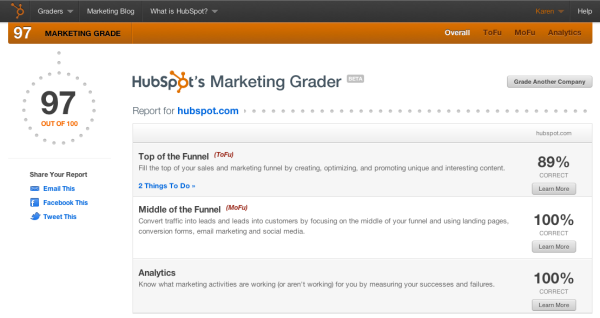At the beginning of my marketing career, I was hit with a bunch of acronyms that sounded more like dog names than business terms: ROI, ROA, ROAS… 🥲I could even imagine fluffy Chow Chow named “ROAS” chasing after a Shih Tzu named “ROI.”

Years later, I catch myself using those terms even in everyday life. “Expensive climbing shoe? Well, they would probably be good for my cliff climbing season, so the ROI is worth it.”
If you're planning to start with marketing and have no idea what these people are talking about, I’m bringing you the list of 50 marketing buzzwords you simply need to know. And those you need to avoid if you don’t want to sound, well… “cringe” (am I supposed to use that word? 😏) Anyways, let’s get started.
What is a marketing buzzword?
A marketing buzzword is a catchy word or phrase that is often used in marketing. It can be technical or describe strategies, tactics, or consumer behaviors.
Marketers love using them because:
- Buzzwords catch people's attention.
- They make things sound new and cool.
- They simplify complex stuff.
- Using them shows you know your stuff.
- They make people feel something.
- Helps brands be different.
- They can go viral online.
- Buzzwords stick in your mind.
- They encourage discussion.
- Helps with search engines.
Buzzwords can pop up anywhere marketing is discussed — presentations, meetings, articles, social media. They might seem complex, but understanding the basic idea behind them is usually easy.
Example
“Brand loyalty” means customers consistently prefer and trust one brand over others. For instance, I always buy Sea to Summit down sleeping bags because I trust its second-to-none quality in ultralight equipment — that's brand loyalty in action.

Free Marketing Plan Template
Outline your company's marketing strategy in one simple, coherent plan.
-
Pre-Sectioned Template
-
Completely Customizable
-
Example Prompts
-
Professionally Designed
50 Marketing Buzzwords to Know
Brand Awareness & Identity
- Brand Awareness: Making sure people know your brand → Ex: Seeing your logo and instantly recognizing it.
- Brand Identity: The special look and feel that makes your brand different → Ex: The unique design of your product packaging.
- Brand Storytelling: Connecting with customers through stories about your brand → Ex: Sharing real-life experiences of your previous customers on SM.
- Brand Personality: The human-like qualities people see in your brand → Ex: Being seen as trustworthy and reliable.
- Brand Positioning: Figuring out where your brand fits in the market compared to others → Ex: Emphasize the best customer service you have.
- Brand Advocacy: Happy customers who tell others about your brand → Ex: Someone buys your product thanks to the recommendation of your loyal customer.
- Brand Voice: The personality your brand always uses in communication with the audience → Ex: Friendly tone and humor in all social media posts
Customer Focus
- Customer Experience (CX): Every interaction with your brand → Ex: A website visit, a phone call, or a store visit.
- Customer Lifetime Value (CLV): How much money a customer spends with you over time → Ex: If a loyal customer consistently spends $100 every month for five years, their CLV would be $6,000
- Frictionless Experience: Making things easy for customers → Ex: One-click checkout on a website.
- Personalization: Treating customers like individuals → Ex: Product recommendations based on browsing history.
- Customer Effort Score (CES): How hard customers work to get your help → Ex: Use surveys after service interactions to calculate it.
- Voice of the Customer (VOC): Listening to what customers say → Ex: Google reviews and social media comments.
- Customer Journey: The path a customer takes to buy your stuff → Ex: A customer sees an ad online, visits your website, adds items to their cart, and then buys them.

Marketing Channels
- Direct Marketing: Sending messages straight to people who might want to buy from you → Ex: Reach out via email or social media to connect directly.
- Social Media Marketing (SMM): All social media-related things you do to show off your brand and speak to your audience → Ex: Run contests on Facebook. share what happy customers say, chat with them through the comments, etc.
- Search Engine Marketing (SEM): Getting your website to the top of search engine results → Ex: Use online ads (PPC) and SEO to make your website easy to find.
- Email Marketing: Sending emails to potential and current customers → Ex: Share news, deals, or helpful info to keep people interested in your offer.
- Mobile Marketing: Making your marketing work great on phones and tablets → Ex: Send text message offers or create a mobile app to reach people more easily.
- Content Marketing: Making cool stuff to share online that gets people interested in you → Ex: Create blog posts, infographics, or SM content to grab attention.

Engagement & Acquisition
- Call to Action (CTA): Inspiring people to take action → Ex: “Book your free spot now!”
- Lead Generation: Attracting, identifying & nurturing customers → Ex: Offer a free guide in exchange for an email address.
- Demand Generation: Getting people excited about what you offer → Ex: Run online ads to show off your new product.
- Conversion Rate: How many people actually convert → Ex: Track how many website visitors become paying customers.

Measurement
- Attribution Modeling: Figuring out what made someone buy something → Ex: Check if a customer bought something because of your SM ad or your website.
- Sentiment Analysis: Knowing if your customers are satisfied → Ex: Analyze the feeling behind customer reviews.
- A/B Testing: Trying two options to see which one wins → Ex: Send two different email titles to see which one gets more people to open it.
- Actionable Analytics: Turning data into the right ways to improve your strategy → Ex: Use website info to see which blog posts are most popular, then write more like them.
- Metrics: Numbers that track how well your marketing is doing → Ex: Track how many people click on your ads or like your social media posts.
- Return on Investment (ROI): Money you make back vs. money you spend → Ex: Track how much money a campaign brings in to see if it's worth it.

Marketing Techniques
- Influencer Marketing: Partnering with SM influencers to promote your brand → Ex: Fitness instructor wearing your new gym collection.
- Cause Marketing: Partnering with a social cause to promote your brand → Ex: Donate a portion of proceeds to charity.
- Growth Hacking: Using creative marketing methods for quick expansion → Ex: Launch a viral TikTok campaign and start some new trend there.
- User-Generated Content (UGC): Content made by creators rather than by the brand itself → Ex: You can pay UGC creators to create content for your site or use real customers’ videos which is always the best option.

Advanced Marketing Concepts
- Artificial Intelligence (AI): Machines handling tasks and giving marketing insights → Ex: Use AI to help you write interesting emails and offers for higher engagement.
- Big Data: Huge datasets studied to find marketing trends → Ex: Analyze customer purchase data to identify popular product combinations for upselling opportunities.
- Cloud Marketing: Using cloud software for marketing and data storage → Ex: Use HubSpot for easier campaign management and team collaboration.
- Conversational Marketing: Talking with customers through chat → Ex: Implement a chatbot on your site to answer common customer questions and qualify leads 24/7.
- Disruptive Marketing: Bold ads that break norms and get people talking → Ex: Launch an SM campaign with a surprising video ad to grab attention and increase brand awareness.
- Earned Media: Free positive press coverage → Ex: Partner with relevant magazines and portals to generate positive reviews.
- Employee Advocacy: Staff promoting your brand → Ex: Encourage your employees to share company news on their SM.
- Freemium: Offering a free basic service with paid upgrades → Ex: Give your software a free trial to show its value and convert users to paying customers.

Competitive Analysis
- Competitive Analysis: Knowing your competition and market → Ex: Identify main competitors and their strengths/weaknesses.
- Competitive Landscape: The market with all players → Ex: Identify main competitors and their attributes.
- Competitive Advantage: Standing out from competitors → Ex: Emphasize superior customer service.
- Competitive Benchmarking: Comparing your brand to competitors → Ex: Track market share and brand awareness.

Marketing Attribution
- Multi-Touch Attribution: Recognizing customers interact with various channels before buying → Ex: Use software to track customer journeys and channel influence.
- First Touch Attribution: Crediting the initial channel a customer engaged with → Ex: Give credit to the first social media ad that caught attention.
- Last Touch Attribution: Giving all credit to the final touchpoint before purchase → Ex: Credit the email with the discount code that sealed the deal.
- Position-Based Attribution: Splitting credit between first and last touchpoints, weighting closer to purchase → Ex: Divide credit between the initial product introduction and reminder email.
- Data-Driven Attribution: Using data to find the best attribution model. → Ex: Analyze which channels consistently drive conversions.

15 Marketing Buzzwords to Avoid
- Disruptive: Vague and doesn‘t tell customers what’s actually new or better.
- Best-in-class: Subjective and doesn't tell why your product is the best choice.
- Paradigm shift: Overused and doesn't explain how your product changes things.
- Actionable insights: It’s corporate jargon and doesn't tell customers what kind of useful information you have.
- Thought leader: Sounds arrogant and doesn't let your accomplishments speak for themselves.
- Low-hanging fruit: Downplays the value you deliver and might not be easy to achieve anyway.
- Growth hacking: It can imply unethical tactics and doesn't focus on building trust with customers.
- Agile: It's meaningless without explaining how you actually adapt to customer needs.
- Synergy: It‘s fluffy and doesn’t tell customers the specific benefits of a partnership.
- Guru: It sounds self-important and doesn't position you as a helpful resource.
- Game-changer: It's overhyped.
- Dominate (the market): It sounds aggressive and pushy.
- Futureproof Your Business: It uses fear tactics and doesn't highlight how your product helps businesses thrive.
- Content is King: It's an exaggeration and too overused. Only high-quality content that resonates with customers is king–not any type of content.
- Innovative: No one trusts this word anymore. Everyone calls themselves “innovative” nowadays.

16 ChatGPT-ish words & Phrases to Avoid
The special category goes to ChatGPT-ish words that every single marketer needs to avoid because they scream AI😱:
- Explore
- Captivate
- Tapestry
- Leverage
- Resonate
- Dynamic
- Testament
- Delve
- Elevate
- Embrace
- Navigate
- Realm
- Transformation
- Unlock
- Uncover
- And the Oscar goes to… “In today’s fast-paced digital world” 🤡

After going through this list, you might feel there are a lot of “restricted” words to use but worry not. If you know how to incorporate the word properly, it’s okay to slip in some of the prohibited words in your copy.
Just remember to be human and yourself in writing. Don’t be a robotic, boring machine that won’t sell anything to anyone. And that’s it. That’s how you'll be a good marketer.
Editor's note: This post was originally published in January 2012 and has been updated for comprehensiveness.







![Are You Qualified Enough? Analyzing Today's Most In-Demand Marketing Skills [Free Handbook]](https://blog.hubspot.com/hubfs/BlogFeature1.jpg)


